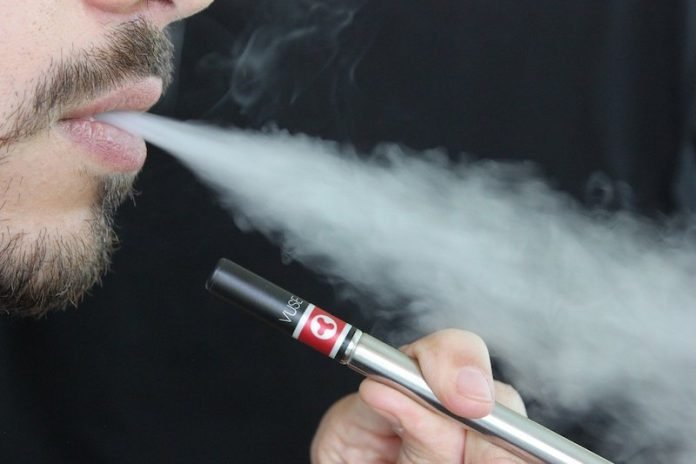
E-cigarette, or vaping, associated lung injury has sickened thousands of people, most under the age of 35.
Studies have linked vitamin E acetate, an oily substance in some vaping liquids, to the disorder.
In a new study, researchers have found a possible mechanism: Vitamin E acetate could increase the fluidity of lung surfactant, causing the surfactant layer to collapse, contributing to symptoms such as shortness of breath and lung inflammation.
The research was conducted by a team at the University of Windsor.
The lungs are made up of tiny cavities (alveoli) where gas exchange takes place.
The oxygen that is breathed in diffuses across the alveolar membrane and into the capillaries, while carbon dioxide passes in the opposite direction to be exhaled.
Lung surfactant, a fluid made up of lipids and proteins, coats the inner surface of the alveoli, reducing the surface tension so that the alveoli can easily inflate when someone inhales.
Scientists still don’t know exactly how the surfactant layer expands and contracts when a person breathes in and out, but one hypothesis is that certain lipids get ‘squeezed out’ or expelled when the alveoli contract, and then spread across the surface again when the alveoli expand.
In the study, the team wondered how vitamin E acetate, which has been found in the lungs of most vaping patients but not in healthy people, could influence this process.
To find out, they added increasing amounts of vitamin E acetate to two model lung surfactants in the lab: one containing only the lipid DPPC (the primary component of lung surfactant), and the other containing a mixture of the four major lipids in the fluid.
They found that increasing vitamin E acetate concentration increased membrane fluidity and compressibility for both model surfactants, up to a plateau.
These findings suggest that, in the presence of the vaping additive, the lung surfactant could ‘squeeze out’ lipids prematurely during exhalation, thereby becoming unstable.
However, the researchers note that these experiments were conducted in a model system without protein components or alveoli, so more work still needs to be done.
One author of the study is Drew Marquardt.
The study is published in Chemical Research in Toxicology.
Copyright © 2020 Knowridge Science Report. All rights reserved.



